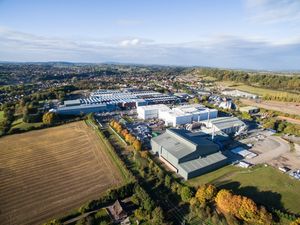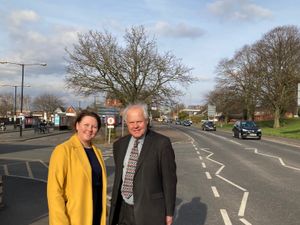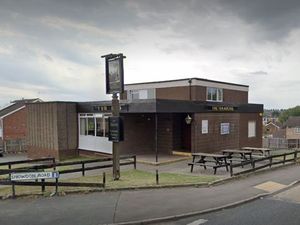Mayor Andy Street criticises 'easy option' of building on Black Country green belt
Mayor Andy Street has pledged to protect the Black Country’s green belt – insisting there is enough brownfield land to cater for new homes in our region.
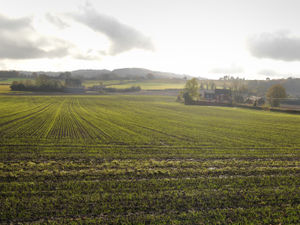
He spoke after the Urban Capacity Review revealed green spaces will need to make way for almost 27,000 new homes.
The West Midlands mayor said he didn't accept the findings of the report – calling developing on the land an "easy option" which had been taken "too many" times.
He says there is no need to build on green land like the Seven Cornfields, between Wolverhampton and Sedgley, and Foxcote Farm in Wollescote which are currently under threat, although no land has been released for development.
Mr Street said the focus must be on regenerating brownfield sites – previously built-on land such as derelict factories – rather than building on cherished fields.
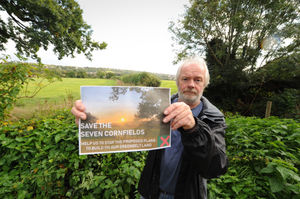
Addressing the Urban Capacity Review, he said: “I simply don’t accept this report and I will do everything I can to oppose its conclusions.
"We can and will find more brownfield sites to regenerate for homes and we can and will find more sites in town centres for housing.
“For years the easy option has been taken in too many cases with green fields sacrificed for building when brownfield sites have been left derelict.
More on green belt housing plans:
“That approach has got to stop – we need homes to regenerate our urban areas and ease the pressure on our remaining green fields.”
The report, as part of the Black Country Plan, states there will be a shortage of 26,920 homes in the Black Country up to 2038, with no room left in urban areas to accommodate them.
The Black Country Plan, originally called the Black Country Core Strategy, is a joint project by the region’s four councils of Dudley, Sandwell, Walsall and Wolverhampton.
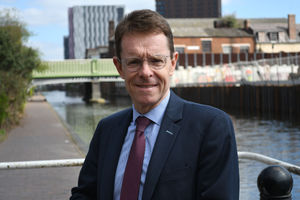
The report said: "It is reasonable to conclude that the exceptional circumstances necessary to trigger a green belt review in the Black Country, in order to meet housing and employment land needs, have been met.”
Favoured sites will be put forward for public consultation in October 2020.
Housing Deal
Mr Street does not have direct control over planning. But the West Midlands Combined Authority (WMCA) which he heads has been snapping up brownfield sites to prepare them to be brought back into use as housing estates.
This has been possible thanks to the £350 million Housing Deal with the Government, which has given the WMCA the cash to regenerate sites such as the former sewage works at Friar Park in Wednesbury, where 750 homes will be built on land the size of 32 football pitches.
It is hoped 8,000 homes will be created along the wider Wolverhampton to Walsall corridor through cleaning up derelict land.
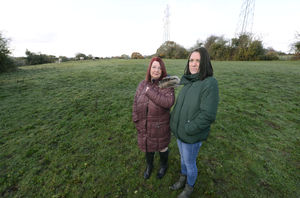
Mr Street says this intervention has been necessary to protect the green belt as convincing house builders to develop brownfield sites is often a non-starter due to the huge costs involved, meaning it is not in their interests.
He insists more brownfield sites will be identified to prove the authors of the Urban Capacity Review wrong.
Its report said it was “reasonable to conclude that the exceptional circumstances necessary to trigger a green belt review in the Black Country, in order to meet housing and employment land needs, have been met.”
'Easy option'
The mayor hit back saying housing strategists had taken the “easy option” for too long by setting their sights on green belt like Foxcote Farm and the Seven Cornfields.
He said: “The West Midlands has an abundance of former industrial sites, many of which are contaminated by their previous use and have been derelict for years.
"Our pledge has been to look first to these sites, to reclaim them and clean them up, when developers come knocking on the door.
"We all understand there is a need for new homes, but too often they have been built on green belt areas in deals which benefit the developers.
“Our policy pledge to put brownfield first resonates with residents who want to protect open spaces and see neglected eyesores reclaimed.”
Sewage works plan
Mr Street said the example of the Wednesbury sewage works showed it was possible to provide the new homes that are badly needed without relying on the green belt, adding: “The former works, which have been bought from Severn Trent, covers just under half the overall 26.4 hectare site, with the remaining majority of the site owned by Sandwell Council.
"The deal, a joint venture between Sandwell Council and WMCA, unlocks the biggest brownfield housing area in the region, but it’s just one of dozens of sites where land is being reclaimed.
“Latest figures show how 186 acres of once-derelict land, the equivalent of more than 92 football pitches, has been brought back into use thanks to a series of loans and grants. This innovative approach is protecting the green belt, and delivering new homes.
"We are making more progress than any other region in accelerating the number of houses being built. Last year we built 14,500 homes in the West Midlands, up by 20 per cent on the previous year, when the national average was just one per cent.”


